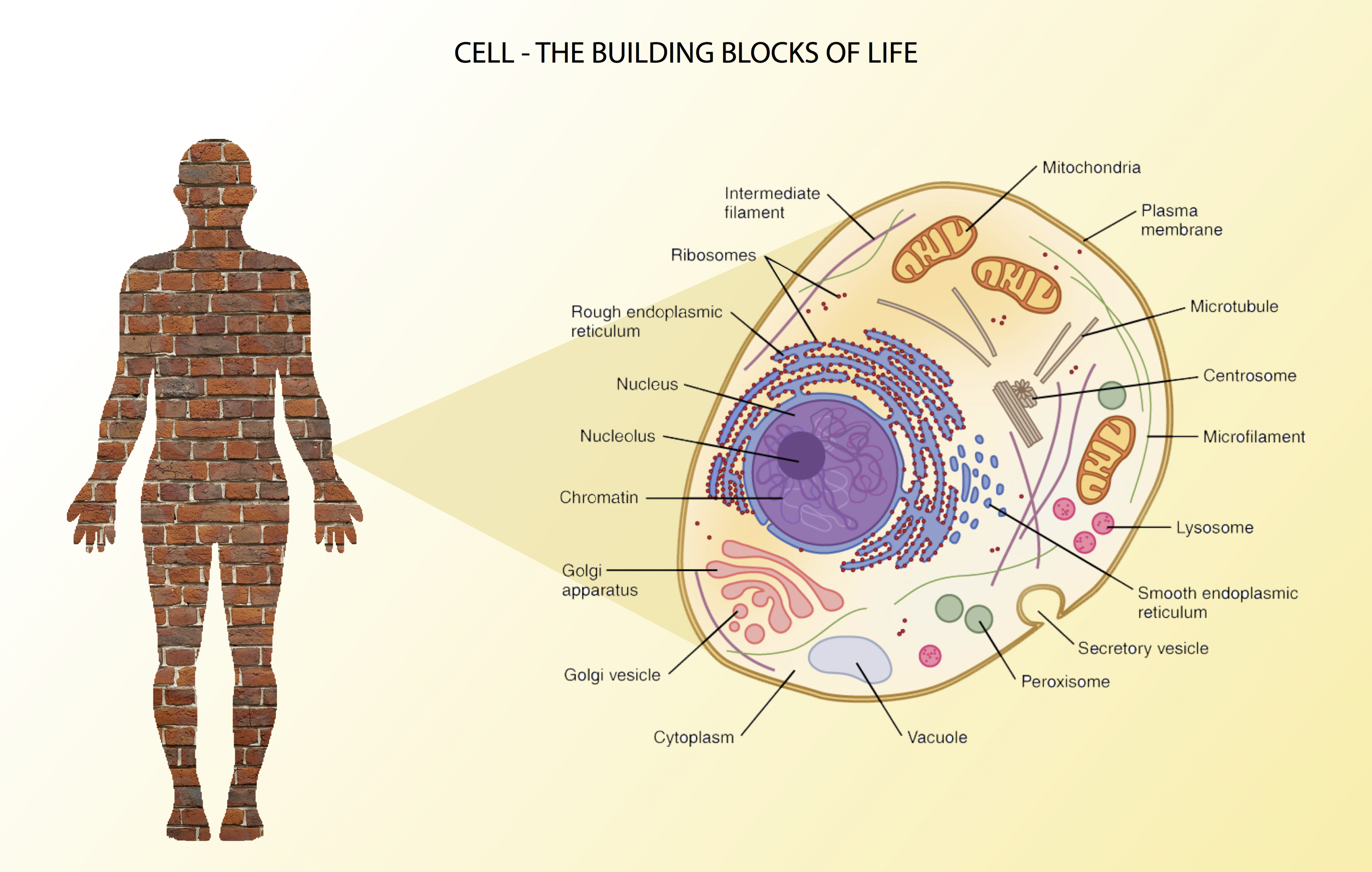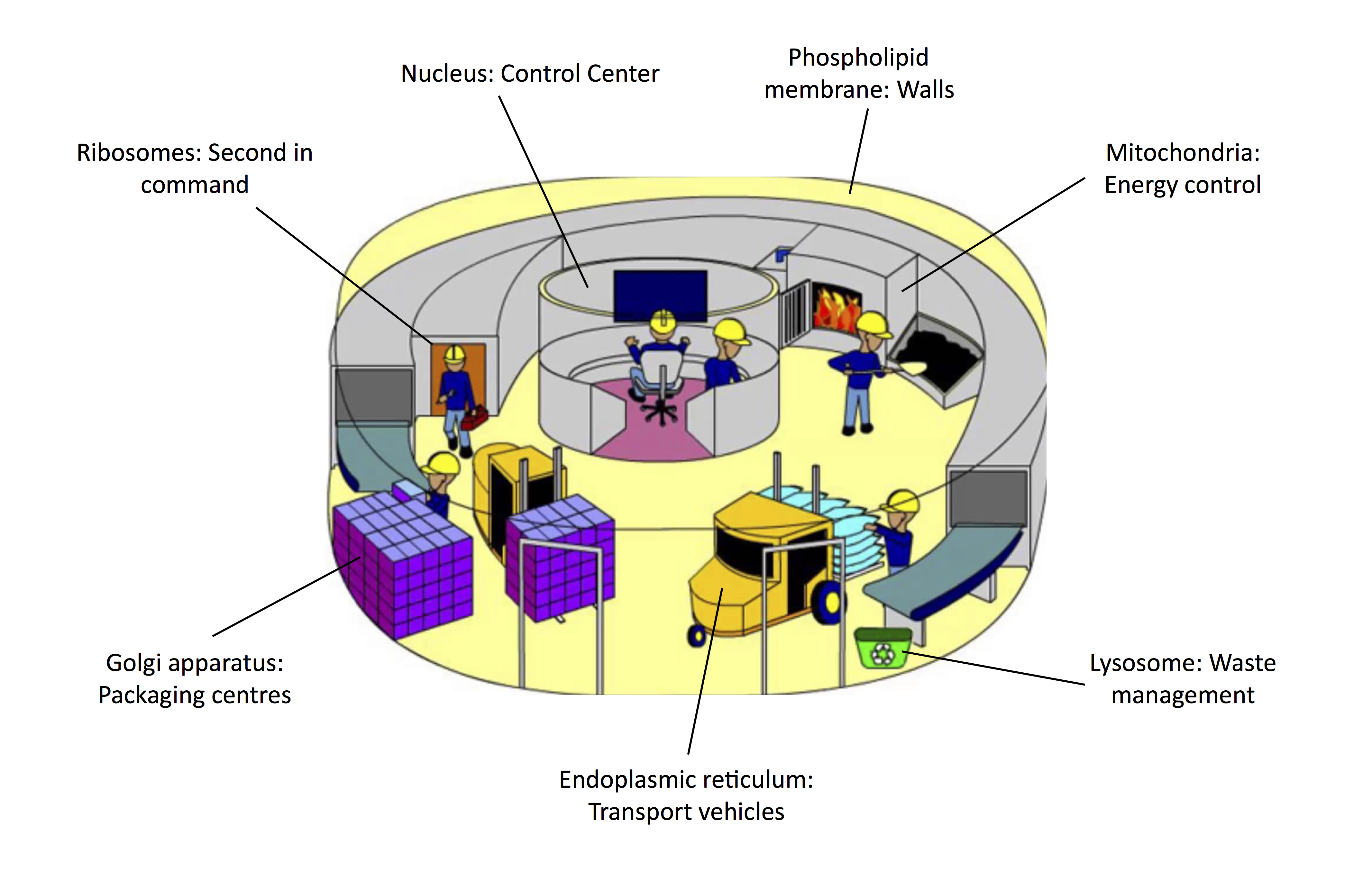When Robert Hooke, an eminent natural philosopher, published the observations he made using his microscope in the form of the famed Micrographia in 1665, little did he know his discovery would changed the way all forms of life were viewed! Around the same time, a Dutch businessman and cloth merchant, Anton Van Leeuwenhoek, who while viewing threads under high precision lenses, stumbled upon the existence of something that turned upside down all that was believed to be known about living organisms.
A lot of factors, mostly technological, played into this new discovery being made. The ability to view things which were invisible to the naked eye, using a device called the microscope which made it possible to peer into a world that was once inaccessible, threw light on the existence of the basic unit of life – the cell.

Some beings, like bacteria, are just one cell big. They are called unicellular organisms. With time, by comparing the similarities between animals and plants, instead of regarding living beings as one entity by themselves, they were now seen to be made up of multiple small units called cells. The cells are the pieces of lego that when put together, form fully functional, complex multicellular living beings – both animals and plants.
If we are made up of cells, what are cells made up of?
Each cell is a small package of organelles swimming in a fluid known as the cytosol, all wrapped together within a cell wall. For a better understanding, let us picture the cell to be a factory. The architecture of the cell is provided by the cytoskeleton. Much similar to how two or more rooms are separated from each other by walls, the cytoskeleton forms the structural framework of the cell.
It provides shape to the cell. Security is a major concern in any manufacturing industrial site. The cell membrane is the wall that separates the inside of the cell from its external environment. Phospholipids play the role of security guards by monitoring and regulating the entry and exit of different molecules. This way, only the necessary molecules required by the cell are allowed to enter, maintaining a strict restricted access policy.
As with any factory, the cell also has various departments and workers. Each organelle is a department that has a specific role. The nucleus serves as the control room. Within the control room is the DNA which commands the other departments of the cell on what they must do. The instructions provided by the DNA determine the behavior of the cell. The ribosomes are second-in-command. They process the instructions issued by the DNA and start the manufacturing process and synthesize proteins. The proteins can play different roles in the cell, like building a support structure, pumping out waste from the cell and assisting in other processes of the cell by following the DNA’s instructions.

The endoplasmic reticulum is responsible for delivering these newly synthesized proteins from the ribosomes to different locations within or outside the cell. The golgi apparatus acts as the packaging unit. It packs the proteins which must be transported out of the cell. The mitochondrion is the energy control unit. For such a high functioning factory to function around the clock without any lag, there must be a lot of energy required by the workers and the departments of the cell. This energy is provided and regulated by the mitochondrion in the form of ATP which doubles as a fuel and an energy drink.
Finally, the lysosome is the waste management centre of the cell. This centre functions by getting rid of the waste materials of the cell and digesting any intruders (such as, bacteria) of the cell. Thus, a cell is a manufacturing unit in which the equipment and workstations are arranged to make sure that there is a simultaneous and continuous flow of work.
Similar but not alike
Stem cells are the newborn cells in your body that don’t have a specific role to perform yet. Once they mature, they become different cells with different roles. It’s safe to say that it’s not just us, but our cells too have an existential crisis at some point in their short lives.
While the cells of an organism share a lot of similarities, they have different functions. The structure of the cell is perfectly suited for the role that it is to perform. What’s interesting about cells is how specific their behavior is. For instance, the white blood cells ambush and attack bacteria and other such foreign invaders of the body. The nerve cells send signals from the brain and the spinal cord to other organs of the body in a matter of milliseconds. The sperm is a sex cell which is motile, i.e. it can move.
Though these cells have different functions, they fit together to form a living being. How? Well, many cells come together to form a tissue. Tissues together form organs which perform different roles. Organs together comprise the organ systems, which function together forming a living being.
Cell Biology – since 1665
This knowledge that we are made up of cells, which in turn are made up of their own machinery, has changed everything that was once known about life. We have come a long way in our understanding of disease, which has lead to amazing breakthroughs in medicine. All of this goes back to the day when Hooke, while viewing a thin slice of cork using his microscope, noticed something that resembled the boxlike rooms of a monastery that were commonly known as cellula.

Leave a comment